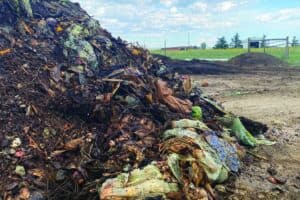The kitchen at St. Mary’s Holy Dormition Orthodox Church in Calhan, Colorado, gets quite a workout in September.Parishioners are getting ready for the 15th annual Slavic Fest, set for Oct. 7 and Oct. 8. The festival, honoring those hardy immigrants who came to the area from Czechoslovakia and the Austro-Hungarian Empire more than a century ago, includes traditional Slavic and Czech food.Monday nights this month at the church are devoted to making pierogis ñ- dumplings filled, in this case, with either cottage cheese, potatoes or prunes. Volunteers make thousands, with potato being the most popular. Oodles of noodles, meanwhile, are made from scraps of leftover dough.”You donít waste much of anything,” said Butch Sakala, one of the festival organizers.In early October, the volunteers turn their attention to halupki, or stuffed cabbage.”We buy anywhere from 275 and 300 pounds of cabbage,” Sakala said. Night one of the two-night process involves coring the heads of cabbage, then boiling the leaves off and deveining them. The next night includes mixing 100-plus pounds of hamburger and 20 pounds of ground pork with onions and spices, then stuffing the cabbage leaves with the mix and cooking them in big electric roasters.Lastly is the making of halushki ñ- “a potato noodle dumpling deal,” Sakala said, another two-night process.All of it feeds the hungry crowds that come from across the region and even neighboring states for the festival. “I’m thinking we feed like 800 or 900 on Saturday and 600 or 700 on Sunday,” Sakala said.It is a way to raise money for the church and an effort to hold onto Old World traditions. Sakala lives on the land where his grandparents, fleeing religious persecution from what was then called Czechoslovakia, settled roughly 120 years ago.At that time, he said, îMost everybody north of Calhan and north of Ramah were Czechoslovakians.” Those immigrants largely settled in the East at first, working in the coal mines and steel mills. The Homestead Act of 1862, with the offer of free land to settlers, brought them to Colorado, Sakala said. (The National Park Service, on its website, notes that, “it is apparent the 37th Congress saw the Homestead Act as a way to build an agricultural nation by encouraging immigrants to settle the public lands of the United States.î)†††††††††††But those seeking a better life on the plains of Colorado didn’t have it easy. The men typically worked in mines and mills in Pueblo and Colorado Springs. The women stayed at home, often living in what were essentially man-made caves, or dugouts. “Every two weeks or so, the men would come home with supplies and stuff,” Sakala said.Today, Sakala acknowledged that he is concerned about preserving the Slavic traditions ó about that rugged past being forgotten.”A lot of the kids are moving,î he said. ìIt used to be the kids would stay and work the farm, or buy the neighbor’s farm Ö now the kids are going to town.”One tradition might already be lost. While there will be music and other entertainment at this year’s Slavic Fest, there will not be polka dancing.”Our polka dancers gave up on us,” Sakala said. “They all got too old to dance.”The Slavic Fest is 11 a.m to 5 p.m. on Oct. 7 and noon to 4 p.m. on Oct. 8 at St. Maryís at 19485 N. Calhan Highway.






